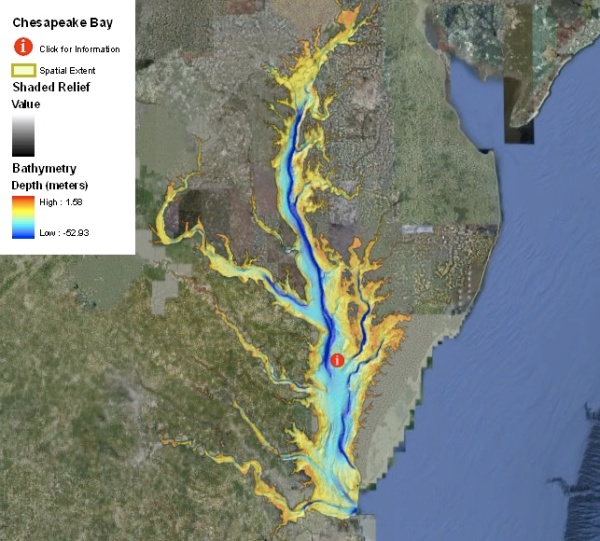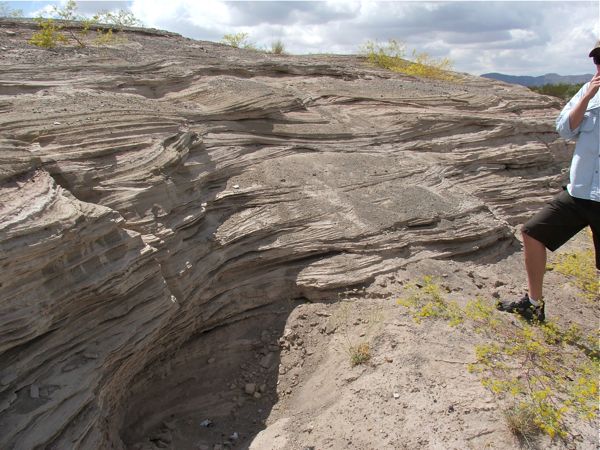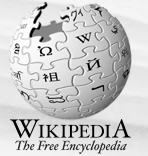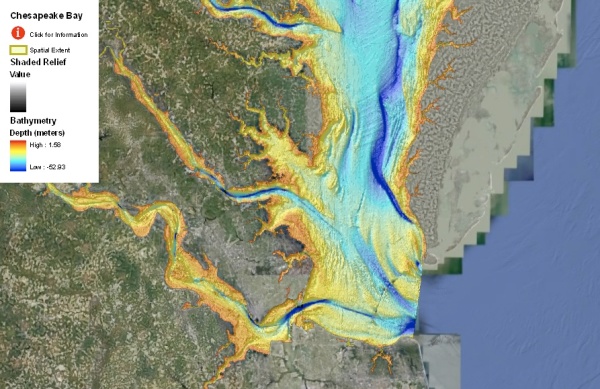I will be in Ventura, California for a couple of days this week to attend and chair a session at the Pacific Section AAPG/SEPM meeting. A few colleagues and I are chairing two oral sessions in honor of USGS marine geologist Bill Normark.
Bill passed away in January of 2008 after a long battle with cancer. He was on my PhD committee and was a huge influence on me. I’ve been wanting to put together a post about Bill’s career for the past year but every time I sit down and attempt to write something I realize that I would need to write a book! Perhaps I will someday.
Bill was a true pioneer in the exploration, discovery, and characterization of submarine fan systems. He always utilized the technology of the day to its fullest extent — from the low-resolution bathymetry of the 1960s to the current centimeter-scale multibeam bathymetry of today. Bill’s impact was significant because he not only described and interpreted processes of modern sedimentary systems of the deep sea but wrote numerous papers increasing our understanding of the patterns we see in the geologic record.
Here is the lineup for the talks in case you’re interested.
–
Tuesday Morning Session
0800–0820
Modern Turbidite System Depositional Patterns Revisited
– Nelson, C. H.
0820–0840
Morphology of a Saline Gravity-Flow Channel on the SW Black Sea Shelf from Multibeam Bathymetry and Preliminary Monitoring of Transiting Currents
– Hiscott, R. N., Aksu, A. E., Flood, R. D., Parsons, D. R., Peakall, J., and Mouland, D.
0840–0900
Pockmarks on the Modern Seafloor as Indicators of Submarine Canyon Abandonment, Offshore Equatorial Guinea
– Jobe, Z. R., and Lowe, D. R.
0900–0920
Where Did They Go and How Big Were They? Latest Pleistocene-Age Catastrophic Floods and Their Deposition in the NE Pacific Ocean
– Reid, J. A., and Normark, W. R.
0940–1000
Axial Channels of Submarine Canyons Off California
– Paull, C. K., Caress, D., Ussler, W., III, Lundsten, E., and Thomas, H.
1000–1020
The Monterey Fan Channel Turbidite Record Offshore Central California: Insights into Submarine Canyon Processes
– Johnson, J. E., Paull, C. K., Normark, W. R., and Ussler, W.
1020–1040
Quaternary Turbidite Deposits Off Central California Provide Evidence of Source of Downslope-Displaced Benthic Foraminifera and Hydraulic Sorting of Playnomorphs
– McGann, M.
1040–1100
Sandy Turbidite Distribution Patterns and Estimated Flow Velocities in Santa Monica Basin, Southern California Continental Borderland
– Hogan, P. J., Romans, B. W., Varnell, S., and Broughton, A.
1100–1120
Growth Patterns of Deep-Sea Fans Revisited: Turbidite-System Morphology in Confined Basins of the Quaternary Borderland
– Covault, J. A., and Romans, B. W.
–
Tuesday Afternoon Session
1340–1400
Comparing Modern and Ancient Turbidite Channel and Channel-Like Elements: Insight and Issues for Developing a First Principle Approach to Exploitation of Deep-Water Reservoirs
– Morris, W. R.
1400–1420
Slurry Flows vs Turbidity Currents: A Key Distinction in Evaluating the Reservoir Potential of Thin-Bedded Deepwater Sequences, Modern and Ancient
– Lowe, Donald R.
1420–1440
Sediment Waves: Are They Cyclic Steps or Antidunes?
– Kostic, S.
1440–1500
Allocyclicity of Sediment Volume and Composition Provide the Basis for a Predictive Model of Turbidite Channel Architectures
– McHargue, T., Clark, J., Sullivan, M., Pyrcz, M., Fildani, A., Levy, M., Posamentier, H., Romans, B. W., Covault, J. A.
1520–1540
Characterization of the Continental Slope and Headscarp of the Palos Verdes Debris Avalanche Based on New High-Resolution Seismic Reflection Data
– Dame, R. D., and Hogan, P.J.
1540–1600-
Sandy Facies at ODP Site 893 in the Santa Barbara Basin and Implications of Proposed Drilling by the Integrated Ocean Drilling Program
– Marsaglia, K. M., Behl, R. J., and Escobedo, D.
1600–1620
Observations from Modern Channel-Levee Systems and Their Utility for Interpretation of Ancient Levee Systems in the Cerro Toro Formation (Cretaceous), Chile
– Campion, K. M.
1620–1640
Wine-Making Conversations About Where Have All the Humongous Deposits of Oceanic Turbidite Systems Gone?
– Scholl, D. W., and Normark, W. R.
1640–1700
Memorial Tribute to Bill Normark
– Covault, J. A., Fildani, A., Morris, W. R., and Romans, B. W.
–
All the presenters were influenced by Bill’s work and most knew him very well — I’m looking forward to hearing all the anecdotes (especially in the second-to-last talk by Dave Scholl).
~~~~~~~~~~~~~~~~~~~~~~~~~~~~~~~~~~~~~~~~~~~~~~~~~~
Sea-Floor Sunday #46: Chesapeake Bay
This week’s Sea-Floor Sunday highlights some bathymetry data I found from NOAA. Their Estuarine Bathymetry site is a great portal for finding data for estuaries for most of the United States coastline.
The images below are screenshots of their GoogleEarth visualization files (kmz files). Geologically, estuaries are essentially flooded river valleys, which is nicely expressed in these images of Chesapeake Bay.
 This next one below just zooms in a bit more.
This next one below just zooms in a bit more.
Click on the images above (or here) to go to the page to obtain the data.
~~~~~~~~~~~~~~~~~~~~~~~~~~~~~~~~~~~~~~~~~~~~~~~~~~
Take Five
Here’s a random post for a Saturday … I got jazz on the mind lately.
This is Dave Brubeck and his band in 1966 playing the ultra-famous tune ‘Take Five’ (which is in 5/4 … get it?).
Paul Desmond’s sax playing is like a warm blanket on a rainy night.
~~~~~~~~~~~~~~~~~~~~~~~~~~~~~~~~~~~~~~~~~~~~~~~~~~
This week’s Friday Field Foto is from Kilbourne Hole in southernmost New Mexico — very close to El Paso, Texas. This was my last field trip as a student back in 2007 — see more photos from that trip here.
Kilbourne Hole is a maar volcano, which (I remember correctly) is an explosive eruption of mostly gas and steam. The volcano-lovers reading this should feel free to comment below correcting me or sharing more.

Cross beds from pyroclastic density currents, Kilbourne Hole maar volcano, New Mexico (© 2009 clasticdetritus.com)
This feature is a very cool place to visit as a sedimentologist because the ejecta deposits are from pyroclastic density currents. The ‘base surge’ deposits shown above are extensivly cross-stratified. I also like how this outcrop shows the three dimensionality of the cross beds.
Bonus link: It doesn’t surprise me one bit to find that Ron has a Gigapan from Kilbourne Hole — where hasn’t Ron been between the west coast and the Mississippi with his camera?
–
Happy Friday!
~~~~~~~~~~~~~~~~~~~~~~~~~~~~~~~~~~~~~~~~~~~~~~~~~~
Friday Field Foto #82: Mouth of the Russian River
This week’s Friday Field Foto isn’t technically from “the field” — never really did any field work, nor was it a field trip. But the beauty of “the field” is that it is everywhere … so I’m countin’ it!
A few weekends ago, my wife and I went up north to get away from regular life for a couple days. On the way up Hwy 1, we stopped to look down at where the Russian River empties into the Pacific Ocean.
I’ve always had a thing for river mouths — they are very interesting transition zones in terms of surface processes and sedimentation. In this case, the Russian River has no chance in building a delta that protrudes out into the ocean … the Pacific Ocean will continue to win that battle for some time.
But, what has formed in this area is a nice beach. We didn’t have time to go down to the beach on this trip … but from the looks of my photo above, I bet this is a great area to check out supercritical flow and maybe some antidunes.
Happy Friday!
~~~~~~~~~~~~~~~~~~~~~~~~~~~~~~~~~~~~~~~~~~~~~~~~~~
Impact factors for sedimentary geology journals
This post is from April 2009 — please be aware that impact factor ratings change over time.
–
A colleague of mine put together some impact factor information about peer-reviewed journals that sedimentary geologists might submit to.
Note: I don’t really have any profound message with this post — I’m not trying to say anything — I didn’t study exactly how the impact factors are calculated — I don’t have any comment on impact factors in general — I’m sure I left out some journals (especially ones that carbonate sed geologists might be into) — blah blah blah, and so on and so forth. I simply thought it was interesting information and wanted to share it on my informal blog.
This first list below ranks a bunch of journals by impact factor from 2007 (the most recent year I could find a comprehensive list). I included Nature and Science because (1) it’s interesting to see just how high they are rated and (2) sedimentary geology research does make it in there from time to time.
- Nature — 28.751
- Science — 26.372
- Earth-Science Reviews — 4.310
- EPSL (Earth & Planetary Science Letters) — 3.873
- Geology — 3.754
- GSA Bulletin — 3.354
- Journal of Geology — 2.607
- Marine & Petroleum Geology — 2.346
- Basin Research — 2.310
- Geological Society of London — 2.304
- Terra Nova — 2.065
- Marine Geology — 1.975
- Journal of Sedimentary Research — 1.890
- Sedimentary Geology — 1.757
- AAPG Bulletin — 1.273
- Geo-Marine Letters — 0.811
When I saw this list I was actually quite surprised that Marine & Petroleum Geology was so high. It’s a good journal and I like it, but I didn’t realize it was doing that well. Maybe I need to get something in there. I’m happy to see Basin Research so high — but maybe that has something to do with just getting a paper accepted (pending revisions) — w00t!! And I’ve forgotten about Terra Nova — there is some intriguing stuff in there from time to time, I need to stay on top of that.
Okay, so that was ranking from 2007 … the next list below is the same journals, but by their 5-year average:
- Science — 30.361
- Nature — 30.616
- Earth-Science Reviews — 6.146
- EPSL — 4.445
- Geology — 4.161
- GSA Bulletin — 3.579
- Geological Society of London — 2.976
- Journal of Geology — 2.978
- Basin Research — 2.743
- Marine Geology — 2.657
- Terra Nova — 2.574
- Marine & Petroleum Geology — 2.266
- Sedimentology — 2.166
- Journal of Sedimentary Research — 2.075
- Sedimentary Geology — 2.038
- AAPG Bulletin — 1.848
- Geo-Marine Letters — 1.259
A bit of jockeying of positions, but pretty similar overall.
For those of you who might be preparing your thesis/dissertation work for publication, it’s worth it to think about where you might submit it early on. Even if you’re not very close to submission, check out the home pages for the journals and the author guidelines. Some journals want more interdisciplinary studies, some like fairly short manuscripts, some prefer longer, more detailed works, and so on.
If you want to check out where other geoscience journals fit or make your own customized list, you need to use Journal Citation Reports. It requires a subscription (which is why an academic colleague of mine looked these up … I don’t have access).
Beautiful sediment plumes in the Gulf of Mexico
If you don’t already have NASA’s Earth Observatory site in your reader or bookmarked somewhere, you should. It has scores of fantastic images of Earth surface processes in action. If you are into sedimentation processes like me, it is a great resource for very cool images.
Last week they posted this beautiful image taken this month (April 2009) of the greater Mississippi River delta and northern Gulf of Mexico. Click on the image (or here) to go to the EO site.

Muddy sediment plumes in northern Gulf of Mexico (credit: NASA Earth Observatory - http://earthobservatory.nasa.gov/IOTD/view.php?id=38273&src=eorss-iotd)
Check out these beautiful sediment plumes extending from the various river mouths.
Here is a close-up of the Mississippi birdsfoot itself.
Very cool.
–
Note: I took the original image into Photoshop and played around with the settings to enhance the plumes a bit more.
~~~~~~~~~~~~~~~~~~~~~~~~~~~~~~~~~~~~~~~~~~~~~~~~~~
A very quick Sea-Floor Sunday this week (better than nothing!).
I saw this over at Deep Sea News this past Friday and couldn’t resist simply copying it because it is super cool (thanks for the material guys!).
Here is a short, 50-second video of a ‘fly-through’ animation of Mariana Trench.
At nearly 11 km (~36,000 ft) deep, it is the deepest place on our planet.
–
if the video embed doesn’t show up, go here to see the video on YouTube.
~~~~~~~~~~~~~~~~~~~~~~~~~~~~~~~~~~~~~~~~~~~~~~~~~~
 My short answer to this is no. Read on for the long answer and my rationale.
My short answer to this is no. Read on for the long answer and my rationale.
Chris over at goodSchist.com recently sent out a call-to-arms to geoscience bloggers to make the Wikipedia article on the mantle better. As I commented on his post, while I applaud the enthusiasm and interest in making such a resource the best it can be, I am quite pessimistic about the endeavor being successful.
Wikipedia is a decent resource, or at least a decent starting point, for some scientific or technical concepts. But overall it is pretty disappointing. Personally, I think that the poor quality and/or incompleteness is a function of the wiki concept itself. Some might argue that the openness of Wikipedia — that the community writes, reviews, and edits itself — is similar to the peer-review process in science. I disagree.
–
In Defense of Expertise
The key in peer review is the word ‘peer’. In this context, a peer is someone who has the technical knowledge and expertise to evaluate someone’s technical work. Whether good-intentioned or bad, those lacking that expertise and experience cannot comprehensively evaluate technical work. People shouldn’t take this personal — it’s a matter of training and experience.
Regarding the current trend of growing disdain for expertise, social scientist Harry Collins said in an intriguing essay in Nature earlier this month that
The prospect of a society that entirely rejects the values of science and expertise is too awful to contemplate.
Indeed.
Another relevant quote from the Collins essay:
…the right way to pursue knowledge about the natural world would be through observation, theorization and experiment, not revelation, tradition, the study of books of obscure origin or the building of alliances of the powerful. Science’s findings are to be preferred over religion’s revealed truths, and are braver than the logic of scepticism, but they are not certain. They are a better grounding for society precisely, and only, because they are provisional. It is open debate among those with experience that is the ultimate value of the good society. [emphasis mine]
I wholeheartedly agree with that sentiment — with one minor quibble, which is the use of the word ‘theorization’ — I think we need to be more rigorous with how we use ‘hypothesis’ and ‘theory’. In the culture of our everyday non-scientific lives, a lot of people use the word ‘theory’ when they should be using ‘hypothesis’. I catch myself doing it from time to time. This is detrimental because it trivializes what a theory is, thus leading to “it’s only a theory” and similar rhetoric from anti-/pseudo-science pundits.
But the main point here is that expertise, which is gained from both training and experience, is the key element. While our current peer-review system certainly isn’t perfect and debates about how to improve it should continue, I think it’s important to acknowledge it’s foundation.
–
The Censorship Canard
Among the most nonsensical responses from the most paranoid (or simply dishonest) of the pseudo-science punditry is that editing of their sloppy, misleading, and/or erroneous writings in Wikipedia equates to censorship.
For example, check out this discussion section for Wikipedia’s mantle article (go here, scroll down to the bottom, and click on ‘show’ for a recent debate about the “cold” mantle that has been archived). The user Sophergeo is unhappy about content that was edited by other users and starts his/her argument by quoting Wikipedia itself:
Neutral point of view [NPOV] is a fundamental Wikimedia principle and a cornerstone of Wikipedia. All Wikipedia articles and other encyclopedic content must be written from a neutral point of view, representing fairly, and as far as possible without bias, all significant views that have been published by reliable sources. This is non-negotiable and expected of all articles, and of all article editors. For guidance on how to make an article conform to the neutral point of view, see the NPOV tutorial; for examples and explanations that illustrate key aspects of this policy, see Wikipedia:Neutral point of view/FAQ.
Neutral point of view? I have a HUGE problem with this. Science is not something to be PC about … why should we give equal time to other “views” as if it were political or cultural commentary. Science is not something that should fall victim to the ever-worsening false equivalency problem. Just becuase someone has a “view” about the workings of the natural world doesn’t mean they automatically get equal status to theories that have taken considerable research to refine, revise, and integrate.
To be fair, an important part of the NPOV statement is that articles should include “all significant views that have been published by reliable sources”. This is good — but, what does ‘reliable sources’ mean? Those with an idea about how nature works might be inspired by an obscure journal article, a non-peer-reviewed popular science book, or even random writings from someone they believe to have relevant expertise.
If a person does not have the knowledge or experience to truly evaluate the data and analyses (or lack thereof) that underlie a “view” then don’t we run the risk of diluting the quality of the information at the expense of being inclusive?
–
Is Anonymity a Problem?

I’ve often wondered if the ability to be anonymous on Wikipedia contributes to issues of quality.
It is easy to argue that because Wikipedia article authors/editors are for the most part anonymous*, there is a lack of true accountability. Misbehavior can, and does, proceed without ramifications under a cloak of anonymity. I think there are good reasons for anonymity for many purposes on the internet — for example, communicating important information to the public without fear of retribution.
But I don’ t think anonymity is necessary everywhere on the internet just because it is easy to accomplish. Why the mystery? What does Wikipedia gain by allowing anonymous people contribute to pages? Writers and editors cannot effectively evaluate each other (i.e., their peers) with regards to level of expertise if most of the contributors are anonymous.
A wiki-style knowledgebase called Citizendium aims to solve this problem by requiring contributors use their real identities. Similarly, there is Scholarpedia — where only invited experts can edit articles and the articles are anonymously reviewed. While I think these are admirable endeavors, it seems that Wikipedia is just too dominating — it commonly comes up on the first page of google search results. Can these other wiki projects compete? I really don’t know … would be interested in hearing opinions from readers.
Within Wikipedia there is the WikiProject for Geology. I don’t know much about it, but my guess is that the vast majority of contributors have good intentions. But, similar to discussion forums and blogs, all it takes is one crackpot with a vendetta against logic and reason to ruin it all.
–
Summary
Returning to the title of this post — should geoscientists spend time making Wikipedia articles better? Perhaps I’m being overly pessimistic, but I just don’t think it is worth my time to engage in these ‘edit wars’. I have enough to do with my job, trying to write papers myself (mostly on the side), reviewing papers for journals, keeping up with the literature, and so on, that making time to haggle with mysterious people on the internet is very low on my list.
Some might argue that Wikipedia (or something similar) is the future of knowledge dissemination so we ought to make sure it is the best it can be and be a part of its development. I’m not convinced that the wiki concept should be the future of scientific knowledge … at least not in this form.
As I mentioned above, I have never been a contributor to Wikipedia and thus don’t have a good sense of its inner workings and culture. If some of you have experience writing/editing articles, especially science ones, please comment below — I’d like to hear your perspective. Perhaps I simply have an unreasonbly pessimistic view?
–
UPDATE (6/5/09): See Suvrat’s post here about the Scitable site from Nature Education and continuation of discussion of this topic.
–
* I realize that there are ways to track IP addresses and such, and that ‘sock puppets’ are revealed … so perhaps it is more correctly pseudonymity … but, whatever one wishes to call it, it’s certainly not fully open and transparent with respect to who did the work (as it is in scientific literature and textbooks).




